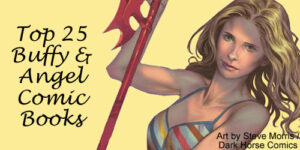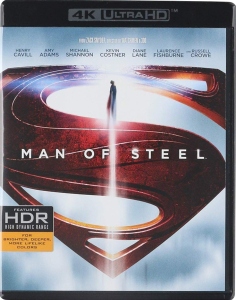Now a franchise of five films with the addition of “Justice League” this week, the DC Extended Universe launched in 2013 with “Man of Steel.” Written by the Dark Knight Trilogy’s David S. Goyer and Christopher Nolan and directed by “Watchmen’s” Zack Snyder, “Man of Steel” attempts to balance everything we love about Superman with a fresh examination of his character and place in the world.
Every subsequent DCEU film – despite having a variety of writers and directors — has followed that formula, to varying degrees of success. Here are three things that have become trademarks of the saga, for better or worse:
PUSHING CHARACTER BOUNDARIES
At the end of “Man of Steel,” Superman controversially kills General Zod by snapping his neck. Some fans said this is out of character, because Superman had never killed before (in this story or in previous incarnations).

“Man of Steel” (2013)
Director: Zack Snyder
Writers: David S. Goyer, Christopher Nolan, Jerry Siegel
Stars: Henry Cavill, Amy Adams, Michael Shannon
If that’s true, it’s more a matter of being lucky enough to not be in this situation: Zod openly admits he will not stop killing humans until they are all dead, and more immediately, he’s moving his laser eyes toward an innocent family. Clark snaps Zod’s neck because he has no choice, but his scream shows his pain at killing a living being.
He’s still very much Superman, but the DCEU is a darker world than that of the five-film saga of 1978-2006. Clark’s dad encourages his son to hide his powers as long as possible, even if he must let people die. (This parenting approach makes much more sense in the DCEU than in the Pollyanna world of TV’s “Supergirl,” which I criticized for this same narrative point.) Indeed, Jonathan Kent is killed by a tornado after instructing his son to not save him.
“Man of Steel” delves into modern civilization’s cycle of fear and the notion that mistrust is the proper default position toward an unknown quantity. Jonathan’s cynicism about powerful opinion leaders is proven right when General Stanwick questions Superman’s loyalty and decency at the film’s end, right after he proves it in the most epic way.
The U.S. government’s mistrust of Superman then becomes central to “Batman v Superman: Dawn of Justice.” The two films give us a strong sense that Superman really is in danger, even though he is made out of steel and can’t get hurt in most situations.
In the following films: In “BvS,” a deeply disillusioned Batman brands those whom he considers to be the worst criminals, so they’ll be killed in prison. In the century between “Wonder Woman” and “BvS,” Diana hangs up her lasso and consciously avoids helping humans, whom she thinks aren’t worthy of it. The heroes in “Suicide Squad” are all killers and thieves.

INTERESTING VILLAINS
“Man of Steel” provides a nuanced villain to match the hero. Michael Shannon is excellent as General Zod. His line readings all demonstrate that Zod is a man of purpose. His facial hair is limited to a goatee, but he wouldn’t twirl a mustache if he had one.
In the following films: In “BvS,” we get Lex Luthor’s brilliantly detailed schemes; “Wonder Woman” gives us an ambitious German military man and a genius scientist who develops a battlefield poison; and “Suicide Squad” is peppered with bad guys throughout its canvas of gray. Indeed, the worst of the worst is an ostensible “good guy”: Waller, the head of a secret U.S. government agency.
OVERBLOWN ENDINGS
But at the end of “Man of Steel,” Zod goes off the rails and tries to kill as many people as possible out of spite. It might’ve made for a better ending if he acknowledged his failure to terraform Earth into a new Krypton, and surrendered to Superman or killed himself.
Although it plays better with commercial breaks, the last hour of “Man of Steel” is non-stop action. My friend Shaune says he had to take a deep breath after watching the final act of this movie. It’s almost physically exhausting.
While the fighting and shooting choreography for the first two acts is engaging, the grand finale includes Superman dodging tentacles from the Kryptonian ship, cars being flattened by a gravity weapon, buildings toppling like it’s 9/11 times 100, and Lois falling to her doom (until Supes catches her, of course). Inevitably, these beefed-up conclusions require awkward exposition explaining how all of humanity is in peril (the actors can usually pull it off, as Richard Schiff does with his quick explanation of terraforming and the gravity weapon – but still).
I liked the first-act bar scene of a bully unknowingly harassing the Man of Steel much more than any of this CGI-fest.
In the following films: Frontloaded with decompressed (except for the jittery “Suicide Squad”) character scenes, the subsequent movies likewise place the entire world at stake in the closing moments. “BvS” could’ve ended with the titular fight and capture of Lex; instead Doomsday rises up to destroy the world. “Wonder Woman” could’ve wrapped with Diana skewering the German general on the rooftop; instead she has to battle the literal God of War. “Suicide Squad” blends personal and worldwide stakes pretty well, as Enchantress possesses the body of Colonel Flag’s loved one, June. But even she uses her powers to ransack the Earth.
What did you think of “Man of Steel?” Do you like it more or less now that you’ve seen the DCEU find its course? Share your thoughts below.

